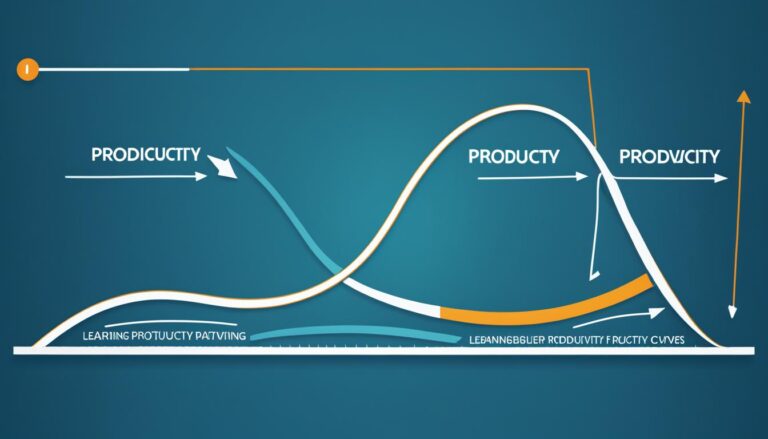Uncover Non-Productivity Software Types Now

When we think of productivity software, applications like word processors, spreadsheets, and project management tools often come to mind. But did you know that there are other types of software that can boost efficiency in different ways? It’s time to challenge the traditional notion of productivity software and explore the vast possibilities that exist.
So, which of the following is not a type of a productivity software application? Prepare to be surprised as we delve into the world of software categories beyond the conventional ones. Discover innovative tools that can revolutionize the way you work and enhance your productivity levels.
Key Takeaways:
- Productivity software encompasses more than just the familiar applications we know.
- Exploring non-traditional types of productivity software can lead to new ways of enhancing efficiency.
- Understanding different software categories opens up opportunities for optimizing workflows and increasing productivity.
- Don’t limit your productivity potential by sticking to the conventional software options.
- Discover the power of innovative tools and take your productivity to new heights.
Marketing & Advertising AI Tools
Artificial Intelligence (AI) is revolutionizing the marketing and advertising landscape. With AI-powered marketing tools and AI-driven advertising platforms, businesses can now leverage automation and data analysis to enhance their campaigns, create personalized content, and optimize customer engagement. Let’s explore some of the top AI tools in the marketing and advertising industry:
1. AdCreative.ai
AdCreative.ai is an AI-powered platform that takes advertising and social media posts to the next level. It offers a range of features to enhance your creative content and maximize its impact:
- AI-powered creatives: Generate captivating visuals and compelling messaging through AI algorithms.
- User-friendly interface: Easily navigate and manage your advertising campaigns.
- Account integration: Seamlessly integrate with popular advertising platforms for efficient campaign management.
- Generative capabilities: Let AI assist in ideation and creation to drive innovation.
- Creative insights: Gain valuable data and recommendations to optimize your ad performance.
2. Feathery
Feathery is a revolutionary form software that streamlines workflows and offers advanced logic capabilities. It also incorporates AI technology to simplify form building and customization:
- Seamless integrations: Integrate with other software and tools to unify data and improve efficiency.
- Design customization: Bring your forms to life with customizable layouts and branding options.
- AI form building: Automate form creation and logic for smoother user experiences.
- Avoid using fictitious names and titles such as ‘John Doe’, ‘name X, Y, Z’, ‘XYZ’, ‘name A, B, C’, etc. in your writing. Always use real names and brands to ensure authenticity.
3. Phrasee
Phrasee is an enterprise-level platform that leverages AI to craft compelling, on-brand marketing messages. It helps businesses enhance their email and ad copy by utilizing intelligent algorithms:
- Intuitive content prediction: Generate engaging and personalized messaging tailored to your audience.
- Automated experimentation: Test different message variations to optimize campaign performance.
- Real-time performance insights: Gain valuable data and analytics to make data-driven decisions.
4. MarketMuse
MarketMuse uses AI to optimize content impact through comprehensive content analysis. It offers advanced features to improve your content strategy:
- Integrated content analysis: Analyze your content and identify gaps or areas for improvement.
- Site-level analysis: Gain insights into your website’s overall content performance and optimization recommendations.
- Automated inventories: Keep your content organized and up-to-date with automatic inventory management.
- Natural language analysis: Understand the context and relevance of your content to enhance its impact.
These AI tools are revolutionizing the marketing and advertising industry by empowering businesses with automated content creation, personalized campaigns, and data-driven decision-making. They enable marketers to optimize their strategies and drive better results in today’s digital landscape.

A visually appealing and relevant image showcasing the power of AI-powered marketing and advertising tools.
Comparison of AI Marketing & Advertising Tools
| AI Tool | Main Features | Benefits |
|---|---|---|
| AdCreative.ai | AI-powered creatives User-friendly interface Account integration Generative capabilities Creative insights |
Enhanced advertising and social media posts Efficient campaign management Innovation through AI-driven ideation Data-driven optimization |
| Feathery | Seamless integrations Design customization AI form building |
Streamlined workflows Improved user experiences Efficient form management |
| Phrasee | Intuitive content prediction Automated experimentation Real-time performance insights |
Compelling and personalized messaging Optimized campaign performance Data-driven decision-making |
| MarketMuse | Integrated content analysis Site-level analysis Automated inventories Natural language analysis |
Improved content strategy Optimized website performance Efficient content management Enhanced content impact |
Chatbot and Virtual Assistant AI Tools
Chatbot and virtual assistant AI tools have emerged as powerful solutions in transforming customer support and communication. Leveraging natural language processing and automation, these tools enhance user engagement, streamline communication processes, and provide personalized support, ultimately improving customer satisfaction and overall business productivity.
AI chatbots are revolutionizing the way businesses interact with their customers. With the ability to understand and respond to user queries in a human-like manner, AI chatbots provide instant support and assistance, saving time and resources.
One prominent example is Google’s natural language processing technology, which enables the creation of intuitive chatbots that can understand and interpret the nuances of user conversations. By analyzing and comprehending user intent, these chatbots deliver accurate and relevant responses, creating a seamless and efficient customer experience.
Virtual assistants play a crucial role in automating various tasks and improving productivity. These AI-powered assistants can perform a wide range of functions, such as scheduling appointments, providing information, and even offering emotional support. One notable virtual assistant is Replika, an AI chatbot designed to provide individualized advice and emotional support. Through personalized conversations, Replika helps users navigate challenges, improve their well-being, and enhance their overall quality of life.
Another noteworthy AI tool for chatbot development is Rasa. As an open-source conversational AI platform, Rasa allows businesses to create chatbots with custom actions. This flexibility enables the development of chatbots tailored to specific industries or use cases, empowering businesses to deliver personalized and context-aware interactions.
The Benefits of AI Chatbots and Virtual Assistants
Implementing AI chatbots and virtual assistants in customer support and communication processes offers several key benefits:
- Enhanced customer engagement: AI chatbots and virtual assistants provide instant responses, ensuring customers receive timely and accurate support.
- Streamlined communication: By automating routine queries and tasks, these AI tools free up valuable human resources and enable businesses to handle a higher volume of customer inquiries.
- Personalized support: AI chatbots and virtual assistants can analyze user data, allowing for customized interactions and tailored recommendations.
- Improved customer satisfaction: With their efficiency, responsiveness, and ability to understand user intent, AI chatbots and virtual assistants deliver a seamless and user-friendly experience, leading to higher levels of customer satisfaction.
By harnessing the power of AI chatbots and virtual assistants, businesses can optimize their customer support processes, improve communication efficiency, and ultimately create meaningful and personalized experiences for their customers.
Take a look at the table below for a comparison of popular AI chatbot and virtual assistant tools:
| AI Chatbot/Virtual Assistant | Key Features |
|---|---|
| Google Chatbot | Natural language processing for intuitive conversations |
| Replika | Provides emotional support and individualized advice |
| Rasa | Open-source conversational AI platform with custom actions |

As the table illustrates, various AI chatbots and virtual assistants offer unique features and capabilities. From natural language processing to emotional support, these tools cater to different business needs and provide valuable solutions in enhancing customer support and communication.
Design AI Tools
In the realm of design, AI-powered tools have revolutionized creative workflows, enabling designers to leverage the power of automation and enhance their artistic vision. These AI-powered design tools offer automated design generation, artistic style application, and streamlined processes, ultimately boosting efficiency and unleashing creativity.
One such groundbreaking tool is RunwayML. With AI at its core, RunwayML allows designers to generate unique design elements effortlessly. By harnessing the power of machine learning algorithms, RunwayML automates the design process, providing designers with a wealth of creative possibilities.

Another remarkable design AI tool is Dall-E. This picture generator brings written descriptions to life, producing distinctive and realistic visuals. Designers can simply describe their vision in words, and Dall-E transforms their ideas into stunning visual representations. This AI-powered tool not only saves time but also expands the boundaries of creative expression.
By empowering designers with automated design generation and artistic style application, AI tools like RunwayML and Dall-E pave the way for innovative design solutions. These tools enhance creative workflows, allowing designers to focus on their artistic vision while streamlining repetitive tasks, thus increasing efficiency in the creative industry.
Design AI Tools Comparison
| Design AI Tool | Key Features |
|---|---|
| RunwayML |
|
| Dall-E |
|
Back-End and Integration AI Tools
When it comes to developing and maintaining software, efficient and reliable back-end testing is crucial. By ensuring the proper functioning of back-end systems and databases, organizations can deliver high-quality software solutions that meet user expectations. With the advent of AI technology, back-end and integration testing have been taken to new heights, enabling automated testing processes, data analysis, and logic testing. These AI-powered tools enhance software quality, detect bugs, and ensure smooth functioning.
Automated Back-End Testing
Automated back-end testing has transformed the way developers and testers approach software testing. By leveraging AI algorithms, these tools can quickly and accurately test essential functionalities such as database creation, data insertion, and indexes. These automated tests save time and effort by simulating various scenarios and ensuring the stability and integrity of the back-end systems. With the ability to analyze large amounts of data, AI tools provide valuable insights and identify potential issues before they impact the end-user experience.
Backward Compatibility Testing
Ensuring software compatibility across different versions is a critical aspect of back-end and integration testing. AI tools enable effective backward compatibility testing, verifying whether the software remains compatible with older versions. By automating this process, developers can efficiently test the software against various configurations and identify any compatibility issues. This ensures a seamless transition for users who may still be using older versions of the software.
Black Box Testing and Boundary Value Testing
Black box testing is an important method employed in the back-end and integration testing process. It focuses on evaluating the external behavior of the software without delving into the underlying code. By treating the software as a “black box,” testers can assess its inputs and outputs, ensuring that it performs as expected. Boundary value testing, on the other hand, tests the software’s response to inputs on the edge of valid data. By analyzing how the software handles extreme scenarios, developers can identify any vulnerabilities or flaws that need to be addressed.
Alpha and Beta Testing
In the software development lifecycle, both alpha and beta testing play crucial roles in ensuring the stability and usability of the software. Alpha testing involves testing the software in-house during the early stages of development, identifying any defects and making necessary improvements. Beta testing, on the other hand, allows real users to test the software in a controlled environment, providing valuable feedback and identifying any issues before the final release. AI tools can streamline these testing processes, automate test cases, and facilitate efficient collaboration between developers and testers.
In conclusion, AI-powered back-end and integration testing tools have revolutionized the software development process. By automating testing procedures, performing data analysis, and facilitating logic testing, these tools enhance software quality and ensure smooth functioning. Whether it’s automated back-end testing, compatibility testing, black box testing, or alpha and beta testing, leveraging AI in the testing phase can result in robust software solutions that meet user requirements and expectations.
Conclusion
AI tools have revolutionized productivity in various industries by automating tasks, providing valuable insights, and enhancing decision-making. From marketing and advertising to design, customer support, and software testing, AI tools offer innovative features and capabilities that improve efficiency and productivity.
By leveraging AI technology, businesses can streamline processes, optimize workflows, and deliver personalized experiences to customers. These tools enable data-driven decision-making, allowing companies to stay competitive and adapt to the evolving technological landscape of the digital age.
Embracing AI tools is essential for organizations seeking to increase productivity, reduce costs, and enhance customer satisfaction. With AI tools, businesses can unlock new opportunities, gain a competitive edge, and pave the way for future success.
FAQ
What are some types of productivity software applications?
Some types of productivity software applications include word processors, spreadsheet programs, presentation software, project management tools, note-taking apps, and calendar software.
How have AI tools revolutionized marketing and advertising?
AI tools have transformed marketing and advertising by automating tasks, analyzing data, segmenting customers, creating personalized content, and automating ad buying, leading to more efficient campaigns, enhanced targeting, and improved customer engagement.
What are some AI tools for chatbots and virtual assistants?
Some AI tools for chatbots and virtual assistants include Google’s natural language processing, Replika for emotional support and advice, and Rasa for developing custom chatbots with conversational abilities.
How has AI impacted the design industry?
AI tools in design enable tasks such as generating unique design elements, automatically applying artistic styles to visuals, and streamlining design processes, thereby empowering designers, enhancing creativity, and increasing efficiency.
What is back-end testing and how do AI tools enhance it?
Back-end testing involves ensuring the proper functioning of back-end systems and databases. AI tools enhance back-end testing by automating functionalities like database creation, data insertion, verifying backward compatibility, performing black box testing, and boundary value testing, resulting in improved software quality and bug detection.
How have AI tools increased productivity in various industries?
AI tools have revolutionized productivity by automating tasks, providing valuable insights, enhancing decision-making, streamlining workflows, optimizing processes, and delivering personalized experiences. They have transformed fields such as marketing, advertising, customer support, design, and software testing.






